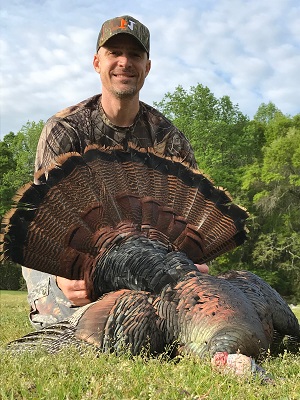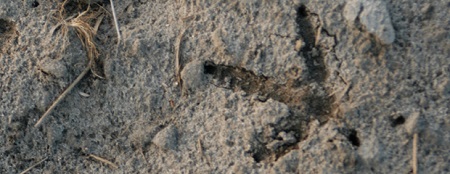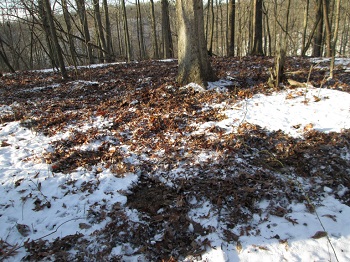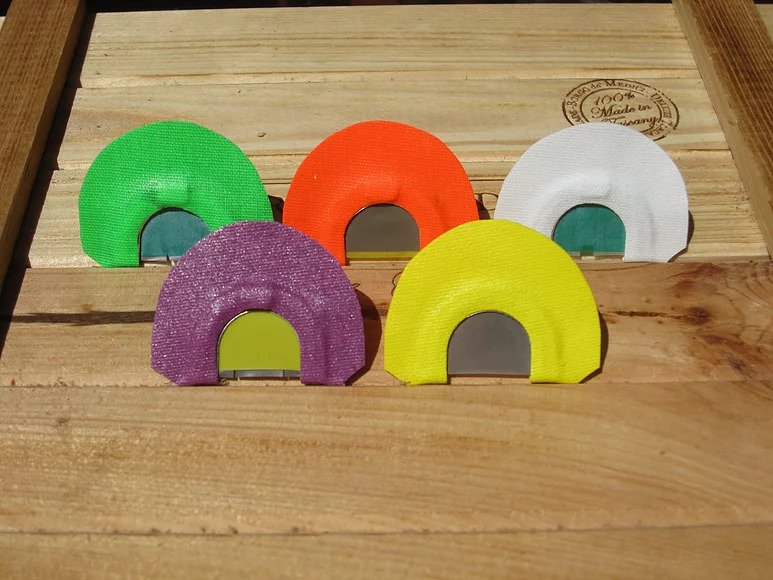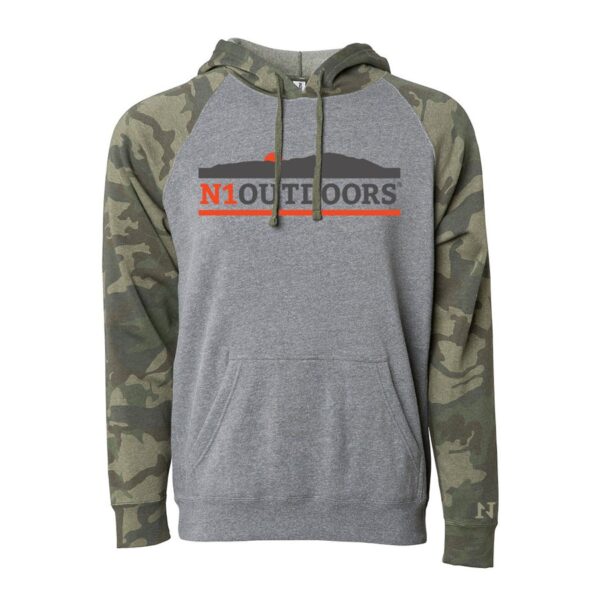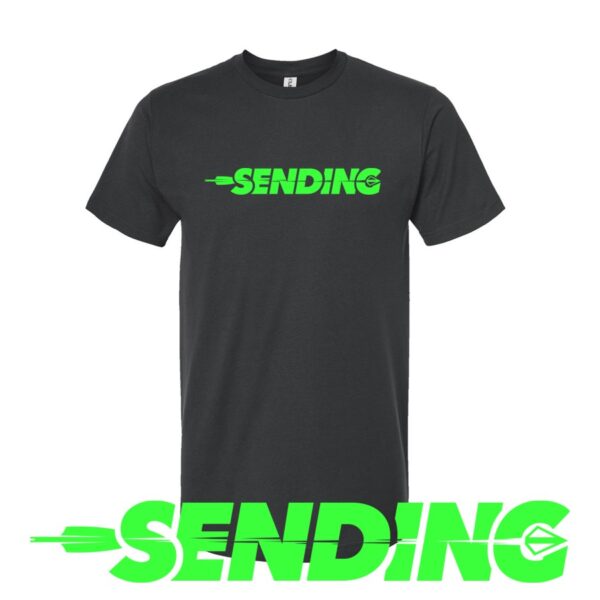The effectiveness of shooting depends not only on the design and technical characteristics of the weapon, or the level of training of the shooter. But, it is also dependent on the type of gun sight or scope that is used.
Just as weapons have evolved, sights have as well.
Initially, front sights were the only type used. Then, in the 16th century, rear sights appeared. And, a little later, a circular orthoptic sight.
It wasn’t until the beginning of the 19th century that sighting optics were used.
Types of gun sights
So, let’s take a look at some of the types of gun and rifle sights…
Open sight

The open sight is the simplest in design. Its device is a rear sight and front sight located on the same line (differ in shape and design). The rear sight can have a fixed or fixed bar. To aim the weapon at the target, the shooter needs to visually combine the rear sight, front sight, and the target so that they are on the same line, exactly in the middle of the sight slot.
The advantages of open sights:
- Reliability;
- Low cost;
- Compactness and lightweight;
- Ease of maintenance, maintainability;
- Simplicity of design;
- Mechanical strength;
- Unlimited operating temperature range
Disadvantages of open sights:
- At long distances, the front sight covers the target;
- Low aiming accuracy, limited by vision capabilities;
- It takes a long time to train shooting skill
Diopter sight

The diopter sight provides the highest accuracy of all mechanical sights, but has very low light transmission. So, it’s not a good option in low light or at dusk.
The Diopter (ring or aperture) sight is easier to use because the shooter needs less effort to aim because it is easier to find the desired position of the eyes, body, and barrel of the weapon.
The design of the diopter sight is a combination of an annular or ordinary front sight with a special hole (a disc with a small hole 0.5 – 1 mm in diameter). This hole is scientifically called a diopter or aperture.
The rear sight disc serves as an obstacle that completely blocks the light flux in the direction of the target, and the aperture hole serves as a diaphragm. Through it, a contrasting image is projected into the lens.
The shooter is forced to position the pupil exactly on the target line. This is the only possible position in which it will be visible. Aiming is intuitive.
Diopter sights are typically used with small-bore or air rifles.
Main advantages of diopter sights:
- High accuracy;
- Simplicity, reliability, mechanical strength;
- Low cost;
- compact and lightweight
Disadvantages of diopter sights:
- Narrow field of view;
- Poor low-light transmission;
- Covers the target (except for the point of impact).
-

The N1 Outdoors® “OUTDOORS™” Tee
Price range: $28.99 through $32.99 Select options This product has multiple variants. The options may be chosen on the product page -

N1 Outdoors® Fishscape™ Outdoor Tee
Price range: $28.99 through $32.99 Select options This product has multiple variants. The options may be chosen on the product page -
Sale!

N1 Outdoors® Just Pass’N Through™ Arrowhead Tee (Various)
$19.99 Select options This product has multiple variants. The options may be chosen on the product page
Optical sight

An optical sight is basically like a telescope with a reticle that simplifies the aiming process and increases accuracy and chances of a successful shot.
The tubular metal housing of optical sights contain the lens and eyepiece. These two lenses have a reticle installed in one of the focal planes. To obtain a straight, non-inverted image, an inverting system is used.
The sight is rigidly mounted on the weapon, and the precise adjustment of the reticle position is performed by the ballistic correction mechanism. Many optic sights have LED lighting for hunting at dusk.
Advantages of optic sights:
- Highly accurate;
- Ability to see the target at long distances;
- Convenience, simplicity, and speed of guidance;
- Simple and reliable design
Disadvantages of optic sights:
- Small viewing angle;
- Increases weight and dimensions of the weapon;
- Overlaps the open sight: Inability to take a shot at close range (except for enclosures)
Laser sight
A laser sight is not a weapon sight in the literal sense of the word, but rather an auxiliary sighting device that has a limited range and accuracy.
A laser range finding rifle scope is a compact device that forms a light spot on the target that coincides with the midpoint of impact. This makes it possible to increase the effectiveness of the weapon at close ranges, as well as the speed of guidance, and the accuracy of fire. The range finder feature give the distance to the target.

A laser sight provides a single pinpoint dot rather than the wide beam of light like you’d get from a flashlight. A well-zeroed laser sight gives you a precise location of where the muzzle of the gun is pointing, allowing for quick aiming.
Benefits of Laser sights:
- Simplicity and high speed of aiming;
- Minimal weight and dimensions;
- Simplicity and reliability of design
Disadvantages of laser sights:
- Dependent on battery power;
- Light spot of the radiation source can be difficult to see at long ranges;
- Bright sunlight can make mark difficult to see
- Laser light shoots straight but bullet trajectories are not; therefore works best at shorter ranges
Night Vision Scopes
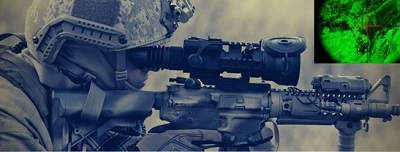
Night vision scopes enhance the image of a target that has a low brightness. It allows for accurate shooting in almost complete darkness.
Advantages of night vision scopes:
- Highly accurate in poor visibility conditions;
- Range up to 300+ meters, depending on the image intensifier;
- Relatively low weight and dimensions;
- Long-term life;
- High reliability (compared to digital ones).
Disadvantages of night vision scopes:
- Relatively high cost of modern models (generation 2 and above);
- Snow, rain, fog, dust, branches, and tall grass are obstacles;
- In complete darkness, and IR illumination is required;
- In the opposite light, protection against illumination is triggered.
Thermal Imaging Sight
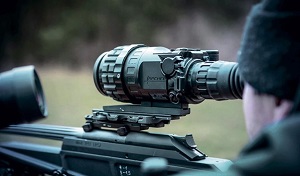
A thermal imaging sight is a device that visualizes the target’s thermal radiation. It does not need external light sources, allowing you to aim the weapon in complete darkness. This uses data on the temperature of the object itself in comparison with the surrounding space.
Advantages of Thermal Scopes:
- The farthest detection distances for thermal targets;
- Works in complete darkness;
- Can work in light, there is no flare;
- Accuracy like telescopic sights;
- Snow, rain, fog, foliage, and grass are not a hindrance.
Disadvantages of Thermal Scopes:
- Complex construction;
- High price;
- Additional power supply required.
Make The Right Sight Choice
Hopefully this has provided you with some helpful information so you can choose a sight/scope wisely. So, from diopter sights to night vision equipment and every sight in between, consider the pros and cons of each before choosing.
Shoot straight… and safely!










